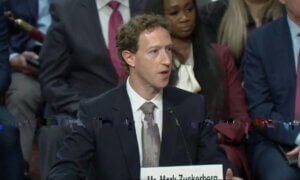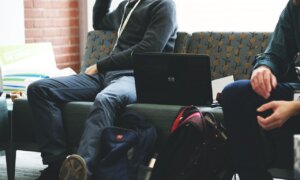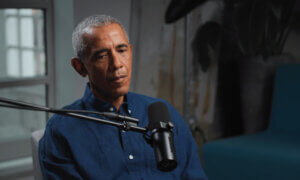The COVID-19 pandemic and flexible work structures inspired discussions about broadband access. Oddly, these monumental global impacts were still not enough to close the digital divide. How did humanity overcome tragedy with as much optimism and drive as it has, yet not everyone can ask Google to define a word? This mind-boggling reality needs addressing — and you are here to help.
What Does it Mean to Close the Digital Divide?
The digital divide is easy to define but hard to conceptualize. It explains the gap between communities that have internet access and those who do not. Imagine not going on Facebook every two minutes or laughing at the world’s most recent meme — you can’t, but others live that right now and it’s not just a lack of entertainment..
Those in the digital divide experience significant consequences to having no online access. The minimal access to tech education minimizes career opportunities for citizens in affected areas. It also encourages the spread of misinformation to vulnerable populations. The fewer access points citizens have to fact-check and self-educate warp the reality of online landscapes. These regions need technology the most to reduce poverty and inequality. The absence of digital resources deepens the divide.
Organizations and governments are committing to meaningful work. In 2021, three billion people worldwide did not have the internet. Efforts revised the number to 2.7 billion people in 2022. It’s not ideal, but it’s vital to acknowledge progress to stay motivated. To close the digital divide means spreading awareness that it exists. Then, it requires jumping over the hurdle to execute improvement. Education is lovely, but action speaks louder than words. In this piece we’ll examine a few ways you can contribute to closing the digital divide.
Urbanization is happening rapidly, and households need internet access to hold a paycheck and maintain livelihoods and relationships. Tech experts and hobbyists reinforce the bridge and today, you will find out how.
How Can I Help, No Matter Who I Am or What I Do?
Are you passionate about tech and getting it into the hands of citizens so they can fully experience its luxury and joy? You don’t have to be working for a nonprofit or in the tech industry to kickstart and educate about these concepts. Curiosity goes a long way, so get actionable with how to close the digital divide.
Boosting Digital Literacy
Digital literacy is developing basic computer skills to the point where functioning in modern society is stress free and accessible. Companies and individuals fight to decrease digital barriers like internet cost and educational access, but the more, the merrier. Tribal and rural areas are the most prominent in the connectivity gap, where 27.7% of people go without standard broadband. Additionally, 3% of people in rural areas don’t have access to broadband.
Programs like the Affordable Connectivity Program in the U.S. and the Regional Broadband Scheme in Australia secure funding while giving more options to households than ever. Since the ACP’s inception, almost 20 million households have enrolled. These programs make computer and internet equipment more affordable to those in remote and rural areas, or those who cannot afford stable connections.
By having the opportunity to own a computer and connect to the internet, people can learn computer skills and etiquette. Creating programs like these requires intersectional thinking, as individuals of marginalized communities have more obstacles to digital literacy than others.
The world experienced this first-hand during the pandemic when schools transported students to pixelated lecture halls and employees had more online training than they knew what to do with. It was a crash course in online navigation and safety for everyone. Leveling up everyone’s digital literacy takes numerous minor and major forms, like:
- Learning definitions for online terms like “browser” or “cloud.”
- How to consume internet content responsibly.
- Recognizing telltale signs of a cyber threat.
- How to browse search engines safely and productively.
- The possibilities of Microsoft or Google suites, like Word or Sheets.
Are you in education or do you have a cousin in the rural part of town with no internet? Digital navigators come in all shapes and sizes — be one today to help skills flourish.
Decreasing Electronic Waste
E-waste is a global concern, where megacorporations illegally dump everything from toxic batteries to split wires in less-privileged regions. The areas receiving the trash are more likely to be part of the digital divide.
The Basel Convention Coordinating Center for the African Region created guidelines to notify stakeholders how to use their funds to clean up the area. Companies must comply with the extended producer responsibility take-back scheme by ensuring their electrical and electronic waste gets back in-house for recycling. Only 17.4% of e-waste is collected and recycled, so everyone must bump those numbers.
Do you work in telecoms or at your local electronics repair shop? Are you an eager student at a university that throws away countless computer towers yearly? You can help close the digital divide by fighting for rules and regulations providing consequences for non-compliant entities.
Funding Infrastructure
Infrastructure gets internet to people, but there’s not enough to cover the world’s population. Everyone from agricultural departments to telecoms professionals invests and provides grants to get necessary hardware to rural areas. It includes:
- Transmission lines
- Fiber optic cables
- Satellites
- 4G and 5G networks
Did you know Google tried to minimize the digital divide with balloons? After Hurricane Maria, Project Loon provided cell service to Puerto Ricans in 2017. Thanks to this project, citizens communicated with loved ones and accessed telehealth services. Thisprogram reminds humanity how innovation and imagination close the digital divide even amid a natural disaster.
Also read: 5 Eco-Friendly Smartphones To Help The Environment and Reduce E-Waste
What Are the Impacts of Digital Accessibility?
If you’re still deciding to commit to closing the digital divide, it’s time to review how it benefits everyone on the planet.
The main boon is digital empowerment. Imagine what it felt like to research a question you had on your own for the first time without making a lengthy phone call or a trip to the library. Consider how your digital skills solidified your employment, bringing your stability daily. The experience must reach every corner of the world because it improves self-esteem and educational independence.
Digital access keeps the world safer from cybercriminals. Many use the password “password” and click on suspicious links because they have never traversed digital landscapes. The more the world interacts with the internet, the more well-versed everyone becomes, decreasing the percentage of cyber threats human error triggers.
To close the digital divide means contributing to the numerous Sustainable Development Goals led by the United Nations. Giving people more internet access contributes to the following:
- Ending poverty
- Improving health and well-being
- Spreading quality education
- Perpetuating gender equality and minimizing other inequalities
- Bolstering economic growth
- Encouraging improved industry and infrastructure
The beauty of making the digital divide extinct is it culminates in improved livelihoods for all humanity, which should motivate everyone to action.
Rendering the Digital Divide Obsolete
Everyone must shoulder some responsibility, whether teaching a neighbor how to make a PowerPoint or advocating for national policymaking to update critical infrastructure. Your efforts and corporate contributions add up to more responsible online communications, enhanced defenses against hackers and empowered households with more tech-forward skills. This way, the digital divide can become a distant memory.
Article contributed by Emily Newton.
About the author: Emily Newton is the Editor-In-Chief of Revolutionized, a magazine exploring innovations in science and industry that shares ideas to promote a better tomorrow. She enjoys writing and researching about how technology is changing the world.
Follow TechTheLead on Google News to get the news first.






















